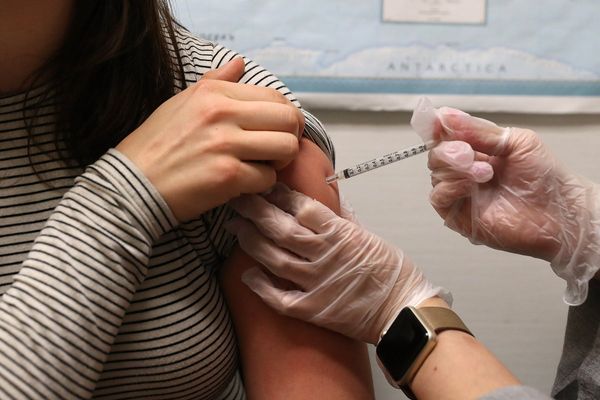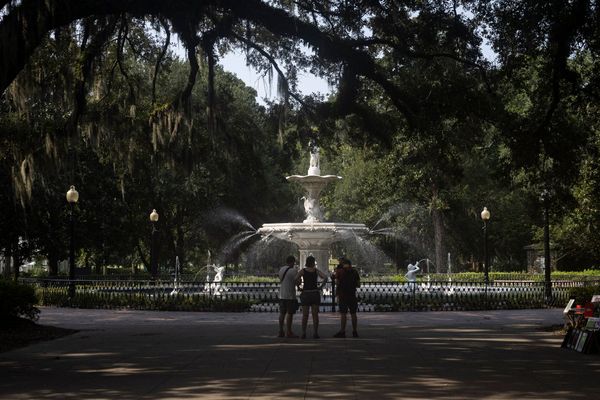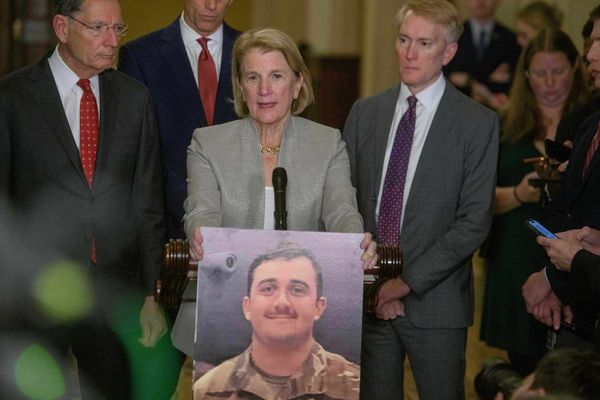Reuben Wu sees landscapes differently. While most photographers capture the world as it is, he transforms it with light, using drones to paint glowing shapes in the sky. His photos feel like scenes from another time—familiar, yet slightly unreal. Mountains, deserts, and glaciers become places of quiet mystery, touched by something beyond nature.
His work is not just about technology but about the way light changes how we see. The glow of his drones isn’t just an effect; it’s a new way of looking at space and time. Scroll down to see Reuben's stunning images!
More info: Instagram | reubenwu.com | Facebook | x.com
#1

Image credits: reuben
Bored Panda reached out to Reuben to learn more about his creative process and personal journey. The artist revealed that it all began unexpectedly at Trona Pinnacles in 2014, marking the start of his exploration of incorporating drones into his photography. "I was shooting a time-lapse at night when a random truck drove through the frame with its headlights on. Initially, I thought the shot was ruined, but watching how the beams illuminated the formations sparked something in my mind. It created a lighting effect that shouldn't naturally exist in that environment.
I started experimenting with attaching lights to drones. It was like bringing studio lighting control into vast remote spaces. What excited me was the ability to light landscapes from angles and heights that were previously impossible to achieve.
The technique evolved further when I began incorporating the actual flight paths of the drones into the images, creating what I call Aeroglyphs - geometric light patterns above natural landscapes. It became a way to interact with these environments without leaving any physical trace, creating a kind of temporary land art."
#2

Image credits: reuben
#3
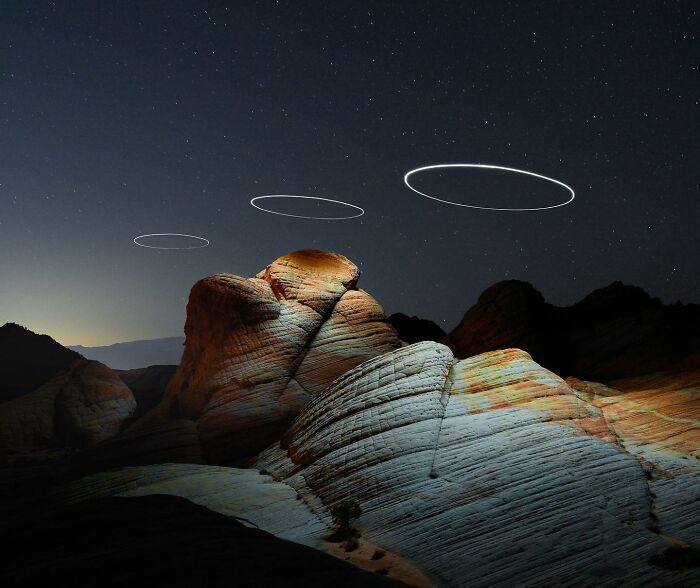
Image credits: reuben
Looking at Reuben's captivating photographs, we wondered how he chooses the locations and landscapes he captures. Is it more about the environment, the light, or a specific concept he's exploring? "It's a combination of all these elements," he explained. "I'm drawn to remote places that offer solitude and a sense of discovery. Growing up, I was fascinated by images in National Geographic that seemed so sublime they merged into figments of my imagination. Now I seek out these places myself.
I do extensive research using tools like Google Maps, Gaia GPS, and Photo Pills for virtual scouting. I'm always looking for places that haven't been heavily photographed, or angles that haven't been explored. I also study weather patterns and atmospheric conditions to understand what I'll be working with.
Conceptually, I'm interested in the tension between natural and artificial, familiar and unfamiliar. I want to show these landscapes in ways that make people look twice, to create a sense of wonder about our own planet rather than imagining distant worlds. Sometimes the concept drives the location choice, and other times, the unique qualities of a place inspire new conceptual directions."
#4
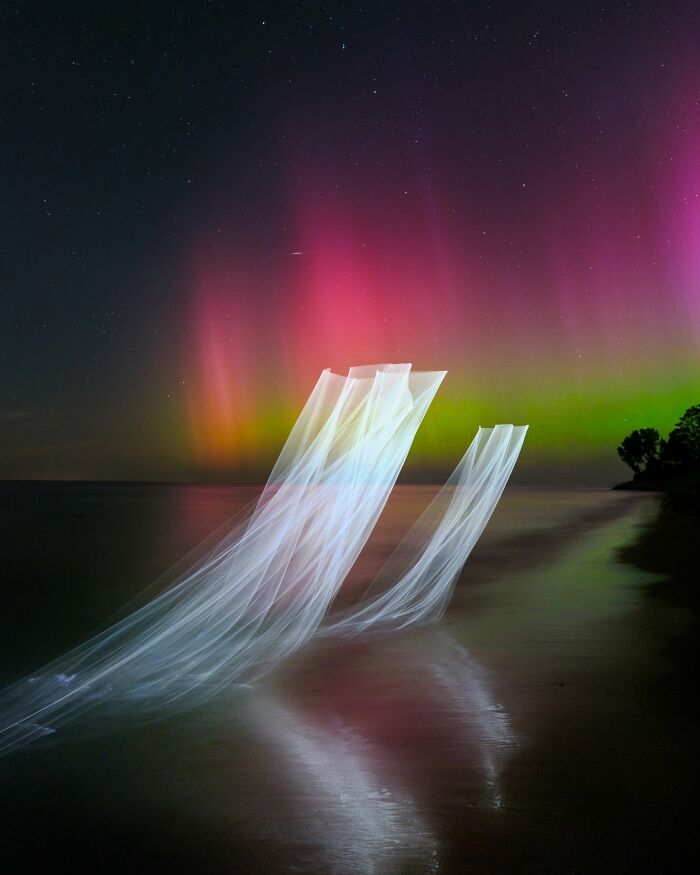
Image credits: reuben
#5
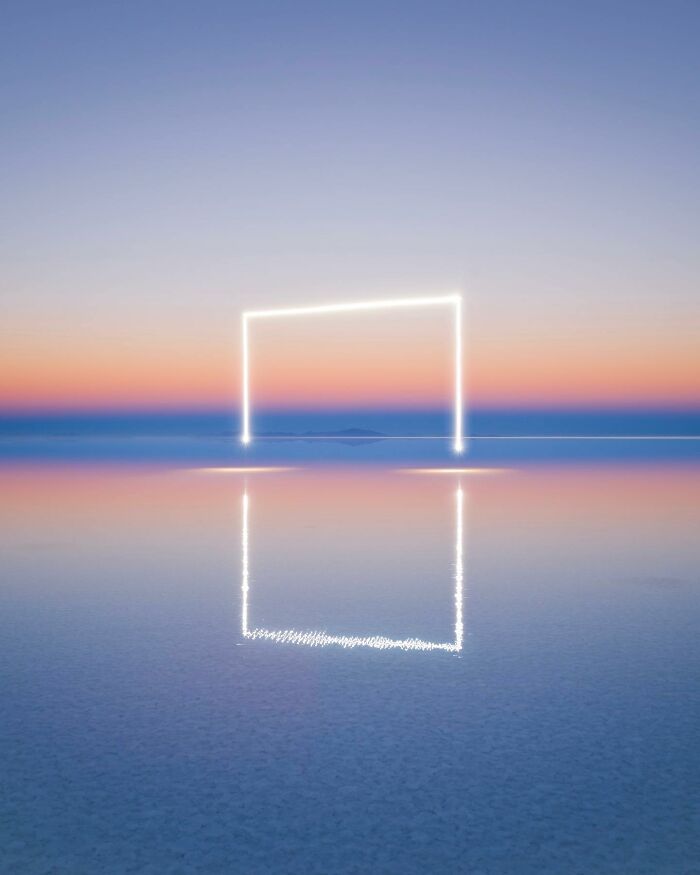
Image credits: reuben
Creating these images is no simple task. Reuben explained what his creative process looks like: "After researching and selecting a location, I arrive before sunset to scout the physical space and lock in my compositions. As the light changes, I'll capture select frames through sunset and into nightfall. Once it's completely dark, that's when the real work begins.
I approach lighting almost like painting with brushstrokes. Each light movement is carefully considered in relation to the landscape. I might make dozens of passes with different lighting angles and patterns until I find exactly what I'm looking for.
Post-production is equally important - it's where I combine multiple exposures to create the final piece. While the shoot itself is quite experimental and playful, the editing process is more disciplined. It's about crafting all these elements into a cohesive vision that tells the story I want to tell. The goal is always to create something that feels both familiar and otherworldly at the same time."
#6

Image credits: reuben
#7
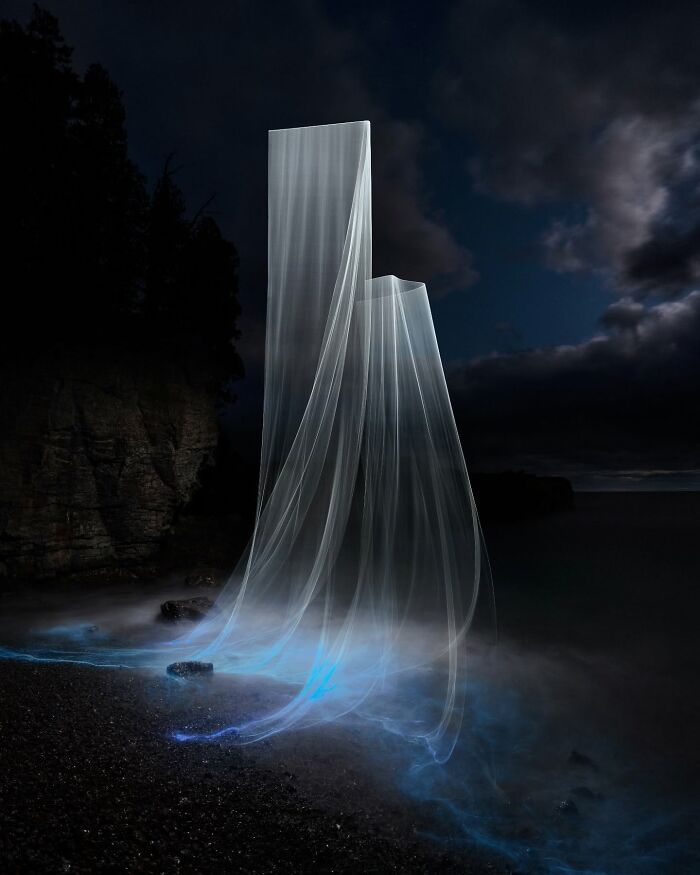
Image credits: reuben
The creative process is often filled with challenges, but for many artists, it’s the journey itself that brings the greatest rewards. For Reuben, the most rewarding moments come when he's alone in these remote places, watching the light interact with the landscape in ways that completely transform it. "There's this ecstatic feeling as everything aligns - the drone's position, the quality of light, the composition - and I know I've captured something special.
I'm just as much in love with making the photos as with the final result - the hiking at night, feeling the wind, watching celestial events unfold, the passage of time, seeing an image appear after a long exposure. These experiences can't be replicated through digital processes alone.
What also brings me satisfaction is knowing I've shown a familiar part of our planet in a completely new way. When people initially think my images are from another world, but also realize they're looking at Earth, that moment of recognition and wonder is exactly what I'm aiming for."
#8
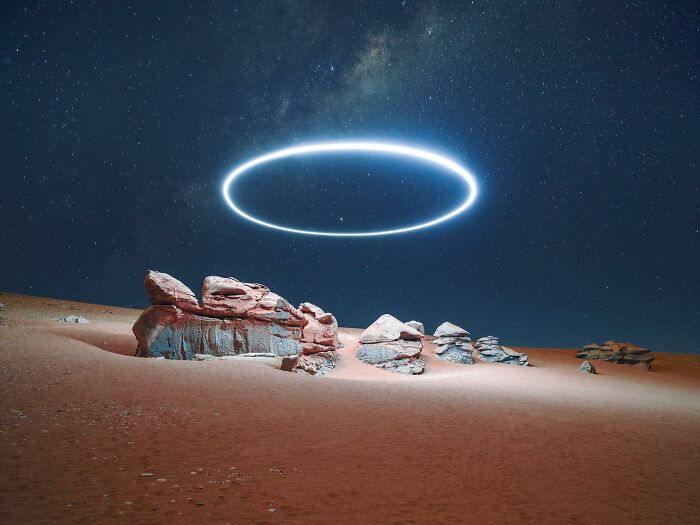
Image credits: reuben
#9

Image credits: reuben
#10
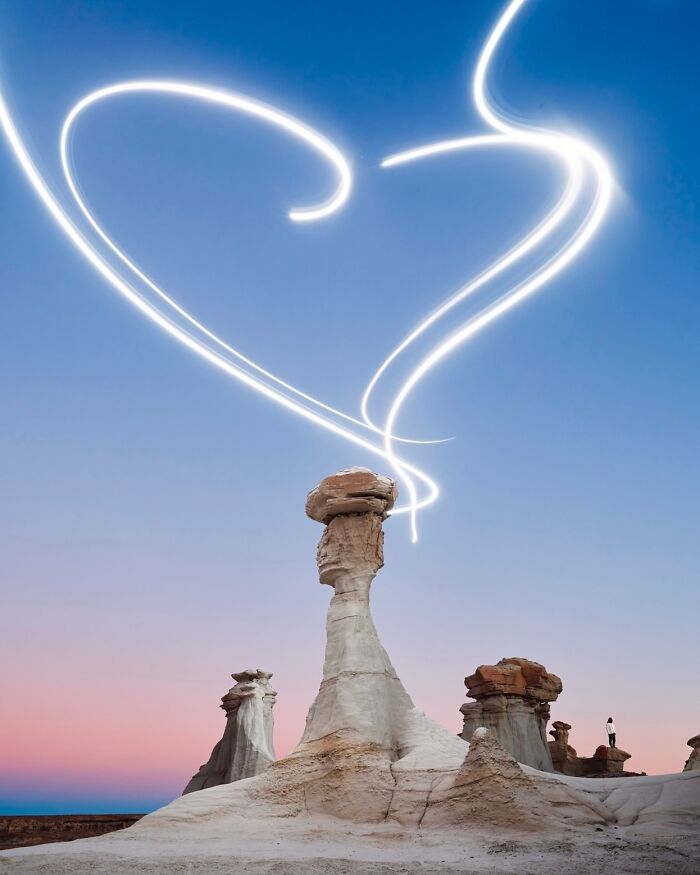
Image credits: reuben
#11
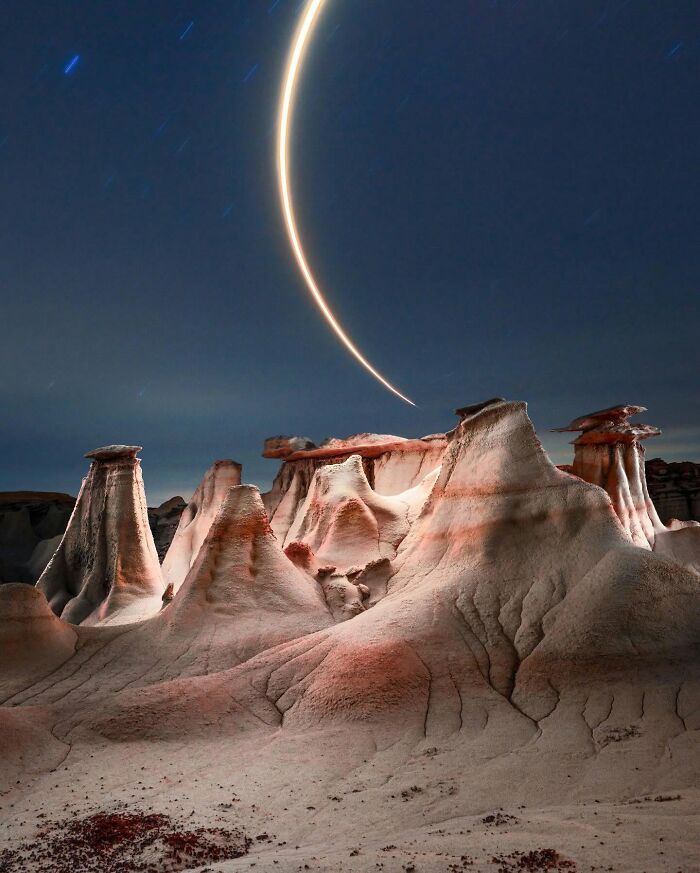
Image credits: reuben
#12
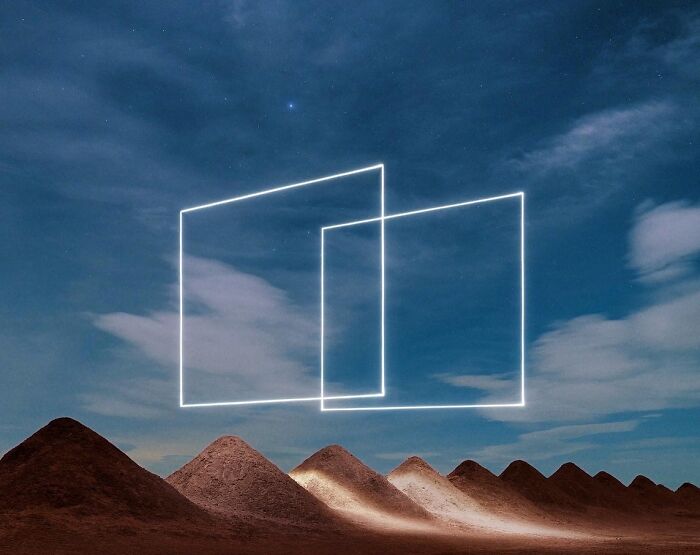
Image credits: reuben
#13
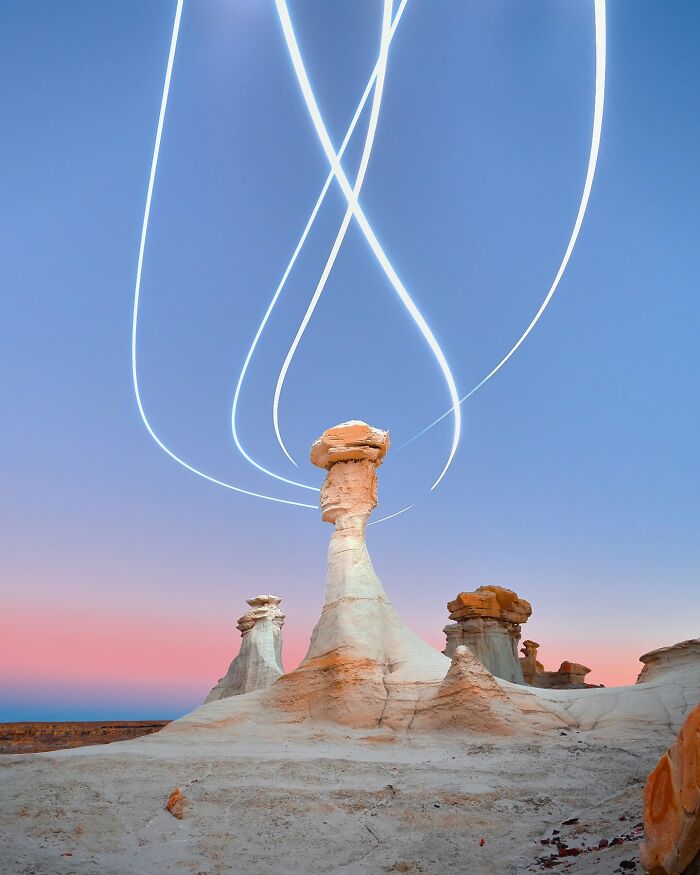
Image credits: reuben
#14

Image credits: reuben
#15
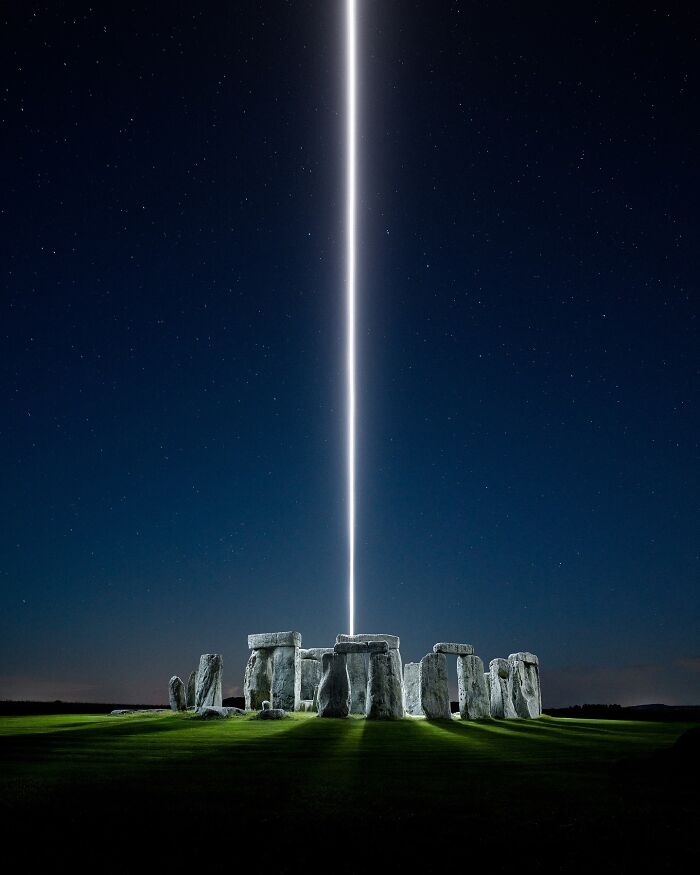
Image credits: reuben
#16
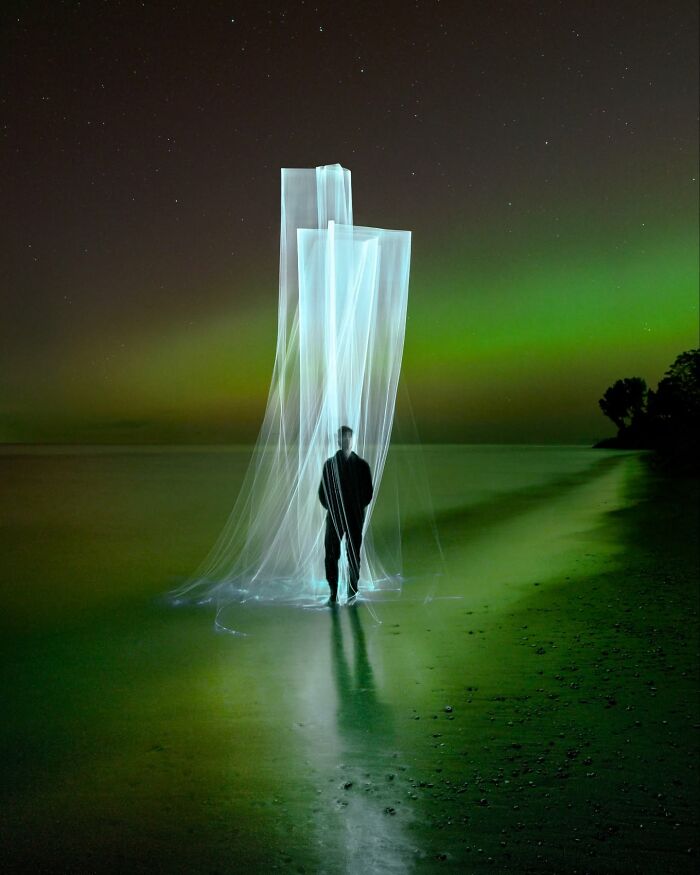
Image credits: reuben
#17
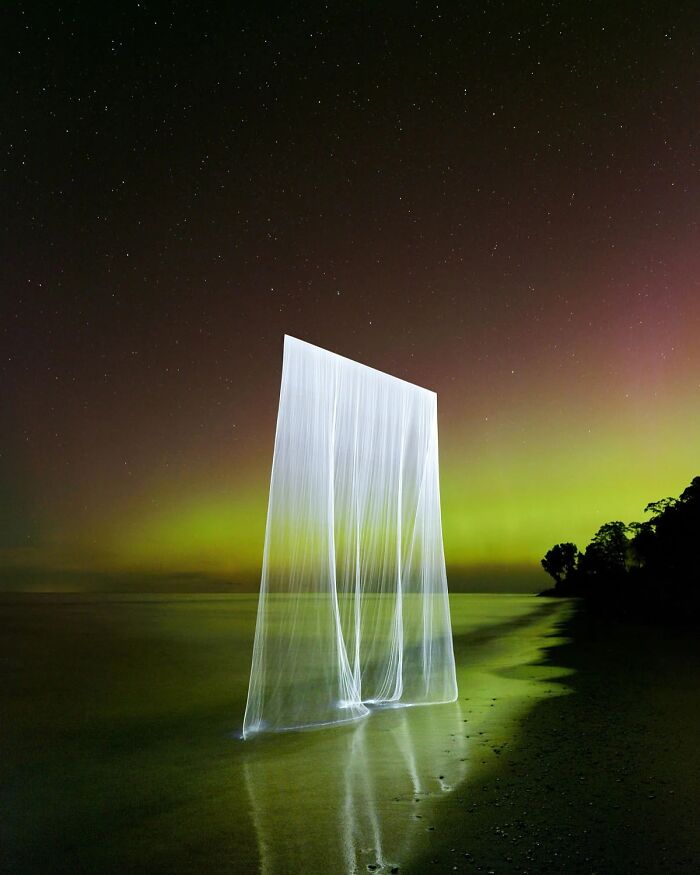
Image credits: reuben
#18

Image credits: reuben
#19
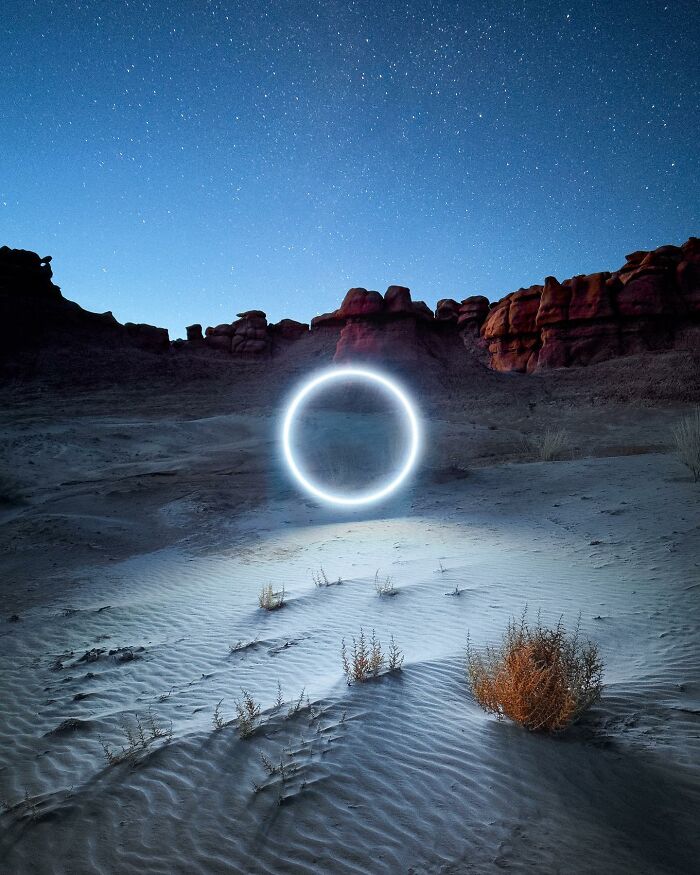
Image credits: reuben
#20
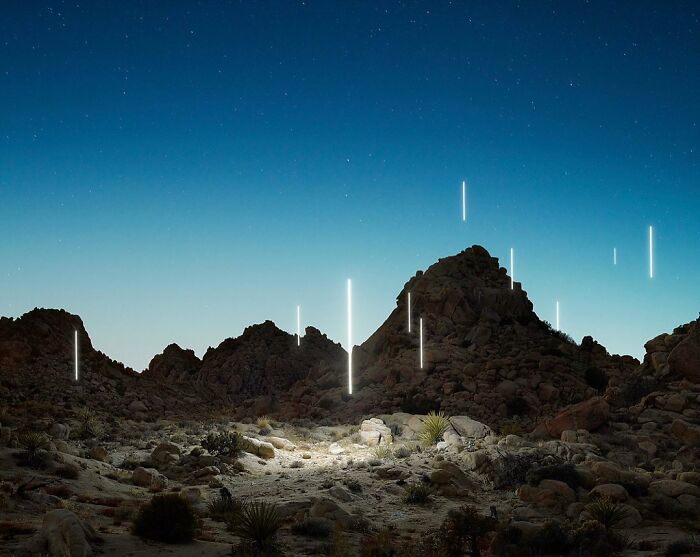
Image credits: reuben
#21

Image credits: reuben
#22

Image credits: reuben
#23

Image credits: reuben
#24
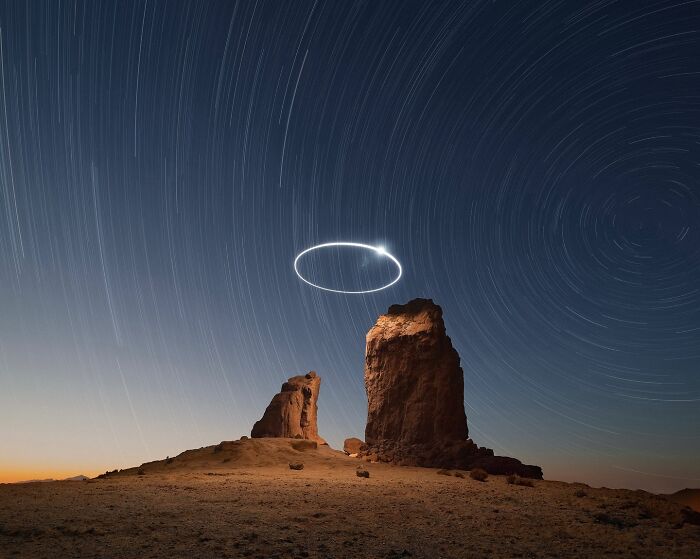
Image credits: reuben

